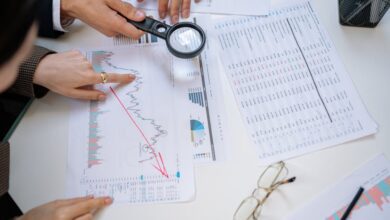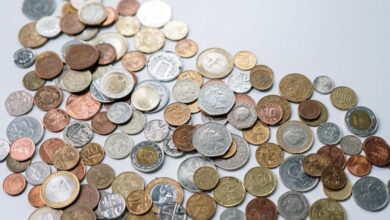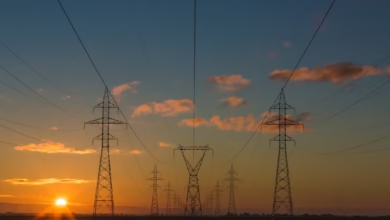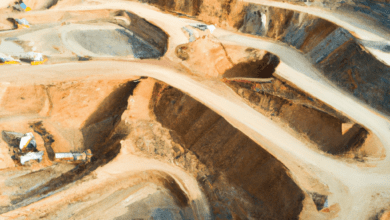Metals in Motion: Analyzing the Interplay of Industry, Investment, and Economic Trends
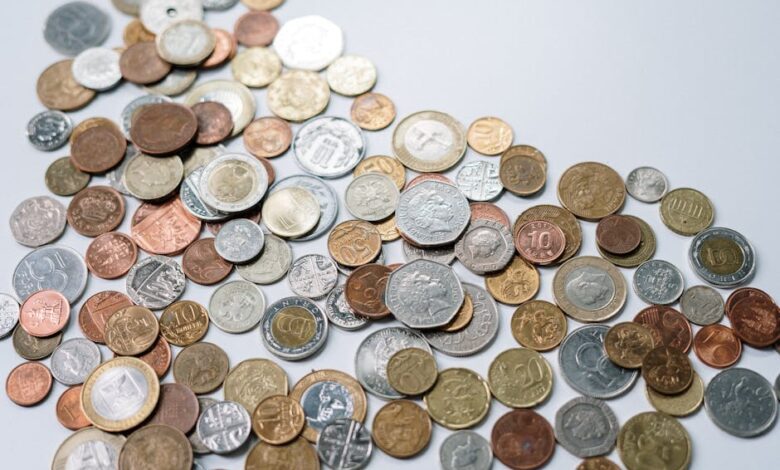
In an increasingly interconnected global economy, the dynamics of metal markets play a pivotal role in shaping both industrial growth and investment strategies. As we navigate through a transformative era marked by technological advancements and environmental concerns, various metals have emerged as critical players not only in manufacturing but also as valuable assets for investors. This article delves into the multifaceted roles of key metals, beginning with silver, whose dual significance in industrial applications and investment portfolios showcases its unique position in the market. We will explore how copper prices serve as a barometer for global economic health, the rising demand for rare earth metals driven by green energy technologies, and the ongoing debate between platinum and palladium as investment choices. Additionally, we will examine how inflation affects the pricing of precious and industrial metals, the future of aluminum in a sustainable economy, and the implications of mining regulations on metal prices. Through this exploration, we aim to provide insights into the intricate relationships between these metals and their impact on both economic stability and investment diversification.
- 1. **Navigating the Metal Markets: Silver's Dual Role in Industry and Investment**
- 2. **Copper's Economic Pulse: Understanding Price Fluctuations and Global Health Indicators**
1. **Navigating the Metal Markets: Silver's Dual Role in Industry and Investment**
Silver has long held a unique position in the metal markets, functioning both as a critical industrial commodity and a sought-after investment asset. This dual role is shaped by its diverse applications and intrinsic value, making silver a fascinating subject for analysis.
In the industrial sector, silver is prized for its exceptional conductivity, thermal properties, and antimicrobial qualities. It is integral to various applications, including electronics, solar panels, and medical devices. As the world increasingly shifts towards green technologies, the demand for silver in solar energy production is particularly noteworthy. Silver paste is a key component in photovoltaic cells, and as countries ramp up efforts to embrace renewable energy, the industrial demand for silver is expected to rise.
On the investment side, silver is often viewed as a safe haven during economic uncertainty, similar to gold. Investors flock to silver as a hedge against inflation and currency devaluation, as it tends to retain value during market fluctuations. The rise of exchange-traded funds (ETFs) has also made silver more accessible to a broader range of investors, facilitating trading and investment in silver without the need for physical storage.
However, the interplay between silver's industrial uses and its investment appeal can lead to volatility in prices. Economic indicators such as manufacturing activity and global economic health often influence silver prices, as increased industrial demand can push prices higher. Conversely, during periods of economic downturn, investment demand may spike, further complicating price dynamics.
Navigating the metal markets requires an understanding of these dual roles. Investors must consider not only the current industrial trends that may affect silver demand but also macroeconomic factors that influence its status as an investment vehicle. As the landscape of metal markets continues to evolve, silver's ability to balance its industrial and investment roles will play a crucial part in shaping its future.
Silver plays a multifaceted role in both industrial and investment markets, making it a unique metal in the global economy. On the industrial side, silver is an essential component in various applications, including electronics, solar panels, and medical devices. Its excellent conductivity and antimicrobial properties have driven demand in the tech sector, where the push for more efficient and sustainable technologies continues to grow. As industries shift towards greener practices, silver's role in solar energy systems is particularly noteworthy, as it is crucial for the production of photovoltaic cells. This transition not only boosts silver's industrial demand but also positions it as a key player in the broader green energy movement.
In terms of investment, silver is often seen as a safe haven asset, similar to gold. Investors flock to silver during times of economic uncertainty, making it a popular choice for diversifying portfolios. Its lower price point compared to gold makes it more accessible, allowing a wider range of investors to include it in their asset allocation strategies. Additionally, silver has historically acted as a hedge against inflation, as its value tends to rise when the purchasing power of fiat currencies declines.
Copper prices serve as a barometer of global economic health, reflecting demand across various sectors such as construction and manufacturing. When the economy is robust, copper demand surges, pushing prices higher. Conversely, during economic downturns, reduced activity in these sectors leads to declining copper prices. This correlation highlights how closely intertwined metal markets are with overall economic conditions.
The rise of green energy technologies has also sparked increased demand for rare earth metals, which are critical for the production of batteries, electric vehicles, and other clean energy solutions. As the world transitions to renewable energy sources, the need for these metals is expected to grow significantly, impacting their market dynamics and pricing.
In the precious metals market, platinum and palladium have emerged as key competitors, each with unique investment characteristics. While platinum is often used in jewelry and catalytic converters, palladium has seen a surge in demand due to its role in reducing harmful emissions in gasoline engines. Investors must consider factors such as supply constraints and changing automotive technologies when deciding which metal to invest in.
As inflation continues to impact the economy, the prices of precious and industrial metals typically rise, as investors seek tangible assets to protect their wealth. This inflationary environment can lead to increased interest in metals as a viable investment option, further diversifying portfolios.
Looking ahead, aluminum is poised to play a significant role in a sustainable economy. Its lightweight properties and recyclability make it ideal for use in industries aiming to reduce weight and improve energy efficiency, such as automotive and aerospace. As the demand for sustainable solutions grows, aluminum's relevance in the market is likely to increase.
Lastly, mining regulations have a profound impact on metal prices. Stricter regulations can limit supply, leading to higher prices, while relaxed regulations may increase supply and lower prices. The ongoing debate around environmental sustainability and responsible mining practices will continue to shape the landscape of the metals market, influencing both industrial demand and investment strategies.
2. **Copper's Economic Pulse: Understanding Price Fluctuations and Global Health Indicators**
Copper, often referred to as "Dr. Copper" due to its historical role as an economic indicator, serves as a vital gauge of global economic health. This versatile metal is integral to various industries, including construction, electrical wiring, and manufacturing, which makes its price movements reflective of broader economic trends.
When the economy is thriving, demand for copper typically rises as construction projects ramp up and manufacturing activities increase. Consequently, this heightened demand drives up prices. Conversely, during economic downturns, reduced industrial activity leads to decreased demand, causing prices to fall. For instance, the significant drop in copper prices during the 2008 financial crisis illustrated how closely tied copper is to economic sentiment and growth.
Additionally, copper prices can be influenced by supply chain dynamics, geopolitical tensions, and changes in mining regulations. For example, disruptions in major copper-producing countries, such as Chile and Peru, can lead to supply shortages, further impacting prices. Moreover, emerging technologies and innovations, such as electric vehicles and renewable energy systems, are expected to bolster copper demand, potentially leading to price increases as these sectors grow.
Investors and analysts closely monitor copper price trends, using them as barometers for industrial activity. Rising prices often suggest a robust economic outlook, while falling prices can signal potential slowdowns. Therefore, understanding copper price fluctuations is essential not only for investors in the commodity market but also for policymakers and businesses looking to gauge the health of the global economy.
In conclusion, the intricate dynamics of metal markets reveal a complex interplay between industrial demands, investment strategies, and global economic indicators. Silver, with its dual role, serves not only as a valuable investment asset but also as a critical component in various industrial applications, reflecting broader economic trends. Similarly, copper prices act as a barometer for global economic health, offering insights into the strength of various sectors.
The rise of green energy technologies has further intensified the demand for rare earth metals, underscoring the importance of sustainable practices in modern industries. In the realm of precious metals, the debate between platinum and palladium continues, with each offering unique advantages depending on market conditions and investment goals. Additionally, the strategic inclusion of metals in diversification strategies can enhance resilience against inflationary pressures, which significantly impact the pricing landscape of both precious and industrial metals.
As we look ahead, the future of aluminum in a sustainable economy appears promising, driven by innovative recycling methods and increased demand for lightweight materials. However, the influence of mining regulations cannot be overlooked, as they play a crucial role in shaping supply dynamics and, consequently, metal prices.
Ultimately, understanding these multifaceted relationships not only equips investors with the knowledge to make informed decisions but also highlights the essential role metals play in fostering economic growth and sustainability in a rapidly evolving market landscape.


